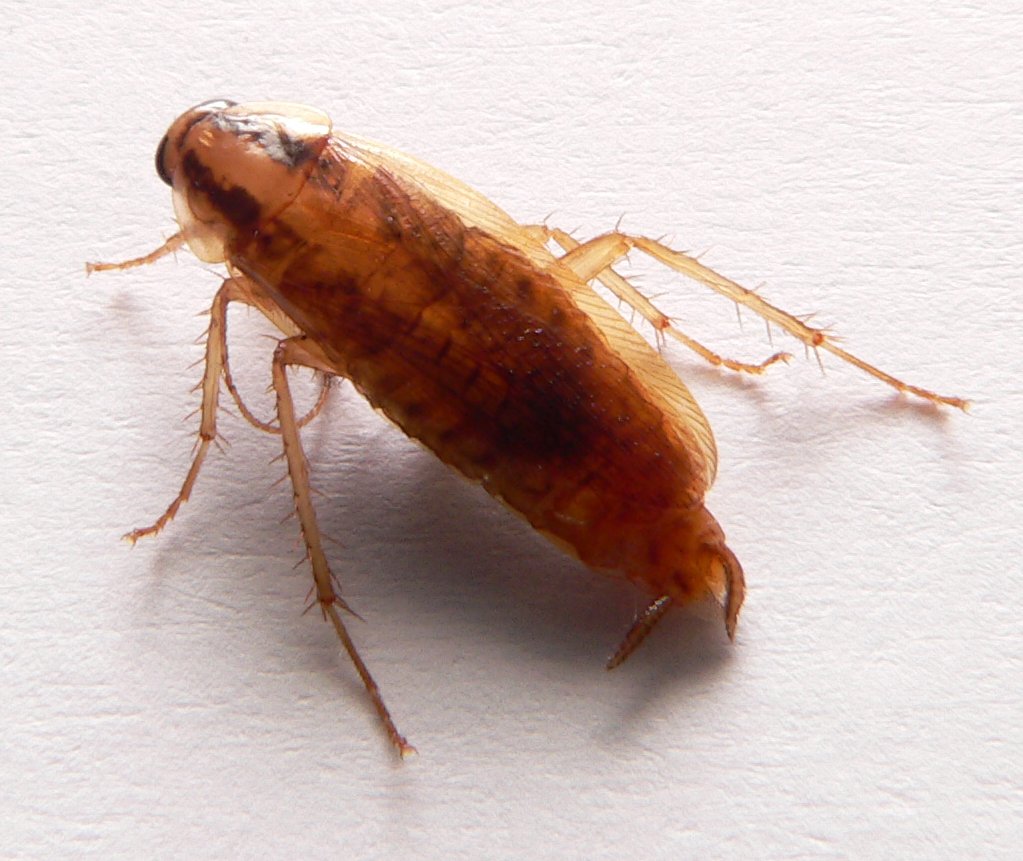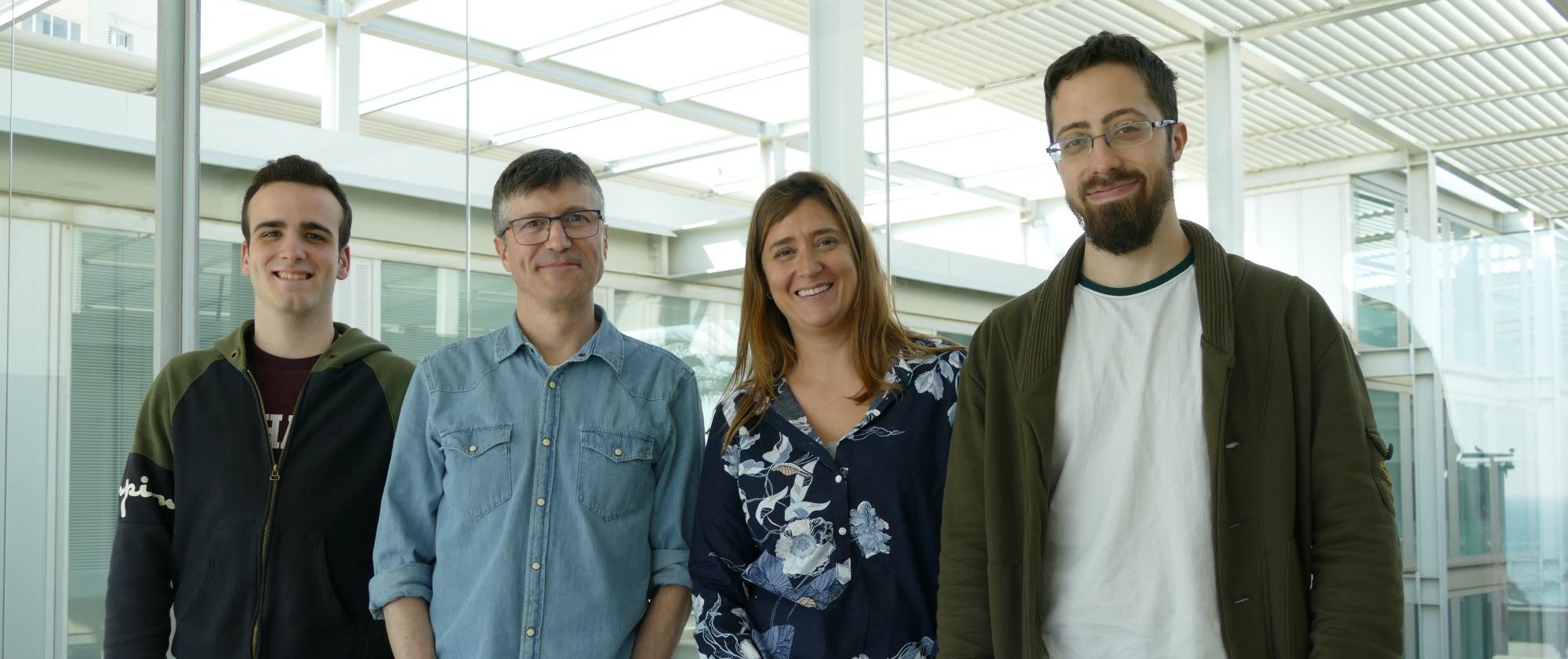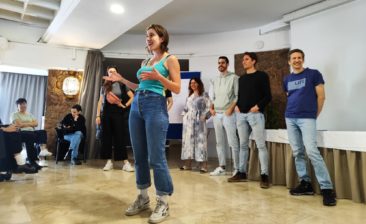The arrival of José Luis Maestro at the Institute of Evolutionary Biology (IBE: CSIC-UPF), one of the six centres of the Barcelona Biomedical Research Park (PRBB), coincided with the inauguration of the IBE. Maestro, as well as some of the current IBE researchers, came from the Molecular Biology Institute of Barcelona (IBMB) in 2008, to set up this mixed research centre of the Pompeu Fabra University (UPF) and the Spanish National Research Council (CSIC).
Maestro’s research group at the IBMB, Nutritional Signals in Insects, has continued at the IBE. Indeed, it was when at the PRBB that it became a consolidated group.
Nowadays, the research group is composed of four people: an undergraduate student, a laboratory technician, a bioinformatics specialist and José Maestro, the group leader. Despite the hard work of leading a group, Maestro admits he cannot understand his job without spending a great amount of time at the laboratory.
The group leld by José Luis Maestro studies how hormones regulate many different processes related to reproduction in cockroaches.
The Nutritional Signals in Insects research group focuses on the endocrinology of insects, specifically the cockroach (Blattella germanica). That is to say, how hormones regulate many different processes – mainly the ones related to reproduction – in these organisms. But, why is it so interesting to study the insects’ hormones? José Luis Maestro tells us about three important reasons: biological pest control, insects as models for physiological processes and nutrition.
Biological pest control
The biological pest control has been, during many years, one of the main goals of the research group. Actually, the control of some populations of organisms could decrease the malaria prevalence, for example, since malaria is a mosquito-borne infectious disease.
In order to achieve this goal, the research group aims to eliminate the venoms used as insecticides. Instead, they propose to interfere on a molecular level, modifying vital molecules for the insect. Only this way they will prevent resistance from appearing (and, consequently, will avoid having to increase the insecticide dose), since they will be interfering with a vital biological process. On the other hand, they will win specificity because of the same reason.
The group wants to interfere with molecules vital for the insects, such as the juvenile hormone, as a more specific plague control mechanism, and one that generates less resistance.
Hence, the group started studying the juvenile hormone, which regulates many physiological processes in insects. Actually, this hormone is involved in the insulin pathway of these organisms.
Moreover, Maestro’s research group and other IBE researchers who are studying cockroaches, such as Dolors Piulachs and Xavier Bellés, have launched a crowdfunding initiative to help finance part of their research focused on biological pest control. Their aim is to implement the CRISPR-Cas9 gene editing technique in cockroaches to interfere in the reproduction of these organisms. You can help the team by donating or simply by spreading the “Pon freno a las cucarachas” campaign, to help them reach more people.
Insects as models
Related to the juvenile hormone and the biological pest control, but from a point of view of using insects as model organisms of common processes in many different animals, the research group has recently embarked on a new project: the study of the insulin pathway in insects. Unlike humans, who have two different genes for insulin – Insulin and Insulin-like Growth Factor 1 (IGF-1) –, insects have many more; 7 in the case of Drosophila melanogaster and Blattella germanica and up to 34 in the case of the silkworm (Bombyx mori).

For many reasons, Maestro’s research group decided to use the cockroach as a model organism for their research:
- They have been working with this species for 30 years, so they know in full detail the physiology of the cockroach.
- According to Maestro, it is a better model organism than the common fruit fly (Drosophila melanogaster), since the fly is a highly modified insect. Indeed, the juvenile hormone is the most important hormone in the reproduction of most insects, except dipterous like Drosophila melanogaster. For this reason, the cockroach is a better model in order to understand the physiology of other insects.
- The cockroach is a hemimetabolous insect. That is to say, they have a simple metamorphosis in which the young organisms often resembles the adult stage. Therefore, they are different from the usual homometabolous models, which have a complex metamorphosis. This difference allows performing comparative studies at an evolutionary level among different models.
- RNAi, a molecular technique in which RNA molecules specifically inhibit gene expression, works pretty well in cockroaches. This technique makes it possible to analyse the function of specific genes.
Maestro explains how, by means of RNAi, his research group managed to reduce the expression of the cockroach insulin genes. The expression decreased, at least, 80%. Nowadays, the research group is analysing what happens to the insect when its insulin levels are reduced. Consequently, they will be able to link a specific function to each insulin. Until now, the researchers have found that there are different patterns of expression throughout the life of the insect; each insulin is expressed in different tissues and at different times.
Cockroaches are a better model organism then Drosophila when it comes to study insect physiology, since the fruit fly is a very modified insect.
On the other hand, the group is also studying if, as well as insulins, their receptors express different patterns of expression.
Nutrition and insects
Finally, Maestro tells us about the current trend of studying insects as a source of nutrients. It seems that they would be beneficial and profitable. On the one hand, they contain high levels of proteins and these are quite similar to the human ones. On the other hand, the cost-production ratio would be very favourable towards production, because insects are easy to breed.
It is therefore not surprising that different companies have been contacting Maestro’s research group to get some information about insect farming, aimed at improving the production of animal food.
Will Maestro’s research group help promote insect gastronomy? Maybe someday we will be cooking nutritious dishes of beetles and termites in our homes kitchens.







